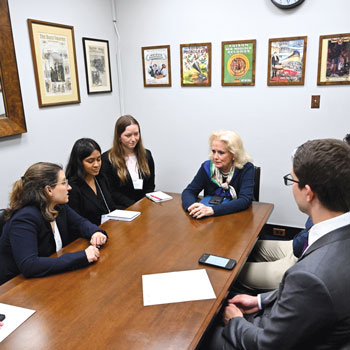Tackling care fragmentation in patients on dialysis
Primary care for patients on dialysis is highly variable, with no typical way that it is delivered. Careful coordination is key.
More than 430,000 people with end-stage renal disease (ESRD) are currently receiving in-center hemodialysis treatment in the United States, and another 84,000 receive dialysis at home or at a nursing facility. But finding out about treatment changes that happen during dialysis sessions can be a challenge for primary care clinicians.
“Once the patient starts dialysis, the primary care physicians tell me it's like a black hole; they don't know what is going on because there's a lack of communication,” said Bernard G. Jaar, MD, MPH, FACP, clinical director in the division of nephrology at Johns Hopkins School of Medicine in Baltimore. “If the patient returns to them, unfortunately most patients aren't necessarily able to provide updated medical information or medication lists.”

Nephrologists may prescribe or adjust medications for blood pressure or anemia, for instance, based on complications of dialysis treatment, but those changes are not routinely shared with other physicians. “There's a big disconnect, and ultimately the person who suffers the most from that is the patient,” Dr. Jaar said.
No typical model of care
Primary care for patients on dialysis is highly variable. In some cases, nephrologists take the lead, managing a range of kidney-related issues such as blood pressure, anemia, bone mineral metabolism, and fluid and volume status, as well as providing cancer screenings and routine vaccinations. But other patients return to their primary care physician to manage preventive care and comorbidities.
“I don't think there is a typical way that primary care is delivered to patients on dialysis,” said ACP Member Caroline Sloan, MD, MPH, a general internal medicine physician and assistant professor of medicine at Duke University School of Medicine in Durham, N.C. “My experience has been that they are coming in for urgent visits for issues unrelated to their kidneys.”
The setting of care also plays a role. Dinushika Mohottige, MD, MPH, a nephrologist at Mount Sinai School of Medicine in New York City, has worked both in systems where the nephrologist leads care and where the primary care clinician handled care coordination.
Patients can also drive the decision about which clinicians are delivering primary care services. Patients receiving in-center hemodialysis, for instance, spend 9 to 12 hours a week on dialysis and may not have the time to visit other clinicians regularly.
Lack of coordination
Patients on dialysis are complex and often have multiple comorbidities, making coordinated care across specialties critical. However, limited time and care fragmentation make it challenging for nephrologists and primary care clinicians to address preventive and chronic disease care needs for these patients, Dr. Jaar said.
Nephrologists can be limited in how much primary care they can provide because of time constraints and a lack of up-to-date knowledge about preventive care and the patient's other comorbidities, Dr. Jaar said. A lack of privacy in dialysis centers can also make it challenging to perform a physical exam or to talk about sensitive issues such as depression. On the other hand, primary care physicians typically see few patients on dialysis and may not be familiar with how dialysis treatment impacts other conditions and medications, he said.
“There are some discrepancies and lack of knowledge on both sides,” Dr. Jaar said.
But the number-one barrier to delivering optimal care is the lack of connected electronic health record systems, which make it difficult for physicians to communicate and see what care other clinicians have delivered, Dr. Mohottige said. “There isn't a streamlined way for all of us to communicate with each other about who is changing what and who is taking ownership of what in this wide range of things that we're all responsible for,” she said.
Dr. Sloan, who trained in the Veterans Affairs system, said it was the only place where she has had complete visibility into the full spectrum of a patient's care, including dialysis notes and notes from other specialists. “Outside of that, I'm not aware of a way for me to find out what's going on at the person's dialysis center or even to find out who their dialysis provider is unless they are in my own system,” she said.
Issues to watch
Patients with ESRD who are on dialysis are immunocompromised, at high risk of infection, have an elevated fall risk, and are typically on several medications, which puts them at risk for altered mental status and other polypharmacy complications. It is also generally advised that patients on dialysis engage in advance care planning with their caregivers and clinical care team, Dr. Jaar said.
The first couple of visits at the start of dialysis can be critical for reassessing medication, Dr. Mohottige said. For example, for patients who are starting dialysis but have some remaining kidney function, she often de-escalates blood pressure medications to avoid additional loss of residual kidney function.
“A lot of us are going through the med list and making sure that anything that is renally cleared is appropriate, getting rid of things that are unnecessary,” she said. “Kidney function is going to decline, so if the patient is not making urine, we remove medications like diuretics that probably are not doing them any good and rather are adding to polypharmacy.”
If patients have been living with chronic kidney disease (CKD) for years, there may be a range of outpatient medications, such as vitamin D analogs and phosphorus binders, that require assessment. Some medications, such as iron, will be provided through dialysis and are no longer necessary orally, Dr. Mohottige said.
While the early part of dialysis is about calibrating medications, over time patients raise concerns about common symptoms, such as itching, fatigue, pain, and anxiety and depression. “I think that is where more collaboration would be really helpful, particularly on the anxiety and depression piece. If we're thinking about [cognitive behavioral therapy] or [a selective serotonin reuptake inhibitor], how can we comanage that?” Dr. Mohottige said. “Similarly for pain, I think that would be a place where a multidisciplinary model would be exceedingly helpful.”
Advance care planning is another area that needs more coordination between nephrology and primary care, Dr. Sloan said. Patients are generally more comfortable talking to their primary care clinicians about end-of-life goals, but because of the lack of shared information, primary care physicians often feel unprepared to have those conversations with patients on dialysis, she said.
Anticipating access to dialysis for someone with failing kidney function and helping to prepare dialysis patients for transplant are two of the most important areas of focus for primary care clinicians, said Patrick Hemming, MD, MPH, a general internal medicine physician at the Duke Outpatient Clinic and a member of the Duke Kidney Transplant Center, where he evaluates potential living donors.
Before patients begin dialysis, it is important to counsel them about the physical and mental health changes they will experience. For instance, Dr. Hemming said he has had patients who are reluctant to have a fistula inserted, so he educates them about the potential complications associated with long-term catheter use. At Duke, they have a partnership with an area dialysis center to provide predialysis teaching to review many of these issues.
Supporting dialysis patients in their routine health needs, whether it's ensuring medication adherence or helping them with smoking cessation, is critical to ensuring their eligibility for transplant, Dr. Hemming said. “That's the single best thing we can be doing for their quality of life and longevity,” he said.
New Medicare models
One approach to improving the care of patients on dialysis is value-based care models established by CMS.
From October 2015 through March 2021, CMS operated the Comprehensive ESRD (CEC) Model, which encouraged dialysis centers, nephrologists, and other clinicians to create an accountable care organization, called an ESRD Seamless Care Organization (ESCO), to share financial risk in improving quality outcomes for patients with ESRD. Over five years, ESCO participation was associated with a 5% decrease in both hospitalizations for ESRD complications and use of catheters, compared with patients who were not in an ESCO. Additionally, phosphate binder adherence improved by 9% in the program.
In 2022, CMS launched the Kidney Care Choices program as a follow-up to the CEC Model. The new program, which will run through the end of 2026, adds additional financial incentives for clinicians to manage care for Medicare beneficiaries with stage 4 and 5 CKD, with the goal of delaying dialysis and moving more patients into kidney transplantation.
To date, these programs have not included primary care physicians as part of the accountable care organizations and there are limited data on how they have impacted the delivery of primary care services, according to Dr. Jaar.
Dr. Mohottige said she would like to see CMS use these types of value-based programs to better address social determinants of health, such as health literacy, housing, transportation, and food insecurity, which are critical for patients to be able to access transplantation and home dialysis modalities. The use of health navigators, such as community health workers, is important to supplement the existing health care workforce, she said.
“Unless we fundamentally address social determinants of health, I think we're just going to continue to see the same disparities we have today,” she said.
Tips for care coordination
When a patient begins dialysis, whether at home or in a center, it is best for the nephrologist to refer them back to primary care or help them find a primary physician if they don't have one, according to Dr. Jaar. This is a key time for educating patients about what to expect in dialysis and the importance of keeping on top of preventive care, he said.
Dr. Jaar said he asks all his new dialysis patients for the name of their primary care clinician and does his best to share with them dialysis-related information. He also gives his card to the patient and the caregivers. “This way, when they go to the primary care physician, they can say, ‘This is my new kidney doctor,’” he said.
He advises primary care physicians to check out continuing medical education programs from the National Kidney Foundation, such as CKDintercept, which are aimed at improving CKD testing, diagnosis, and management in primary care.
Dr. Sloan suggested that primary care clinicians get to know the nephrologists in the community and have a way to reach the patient, through a patient portal or by phone, to get updates on how dialysis treatment is going. “It's hard, but you can reach out,” she said.
Ideally, being able to colocate nephrology and primary care in areas with high rates of CKD would help facilitate communication, Dr. Sloan said.
Dr. Mohottige said she welcomes messages from primary care clinicians asking for details about dialysis or questions about medication changes, either directly or through a note to a patient. And she urged primary care clinicians to be part of the effort to prepare patients for transplant, whether it's running point on the necessary testing or addressing a substance use issue.
“Our primary care workforce is absolutely fundamental to kidney care, period,” Dr. Mohottige said. “I take pride in providing comprehensive care to my patients and I recognize that I can't do it all, so we have to work together.”




